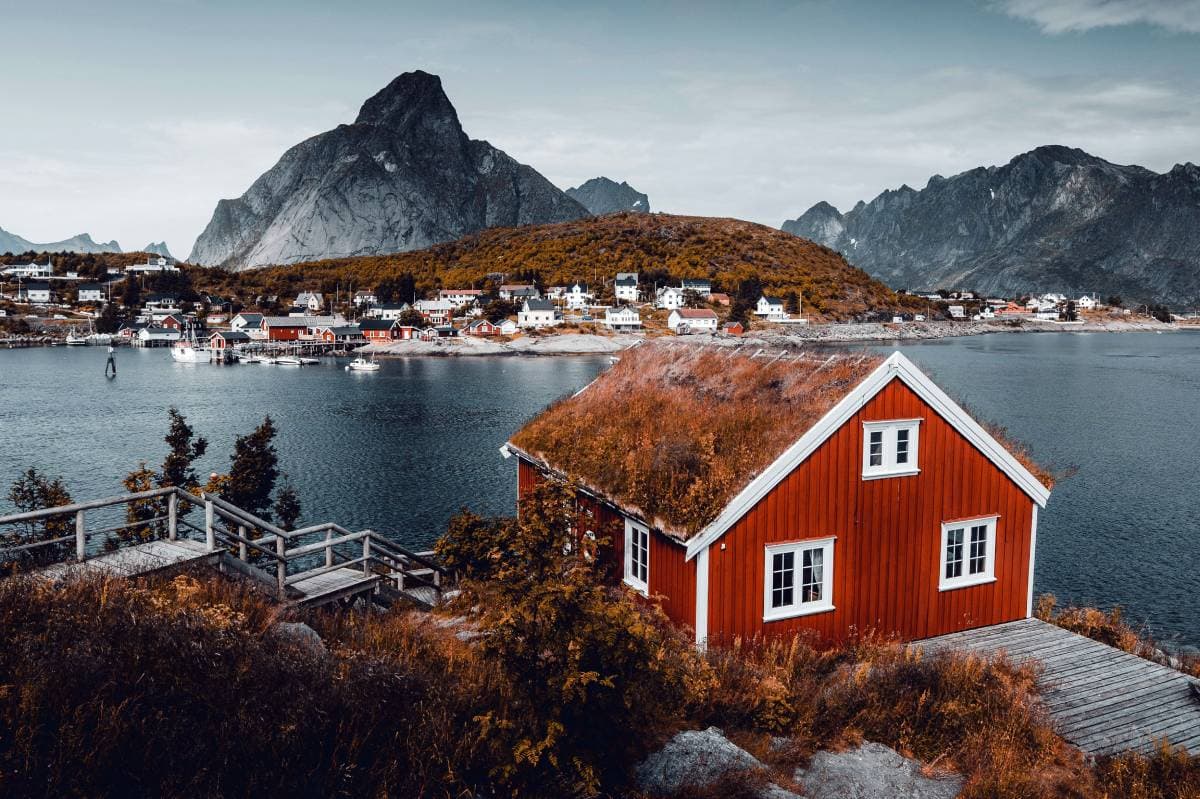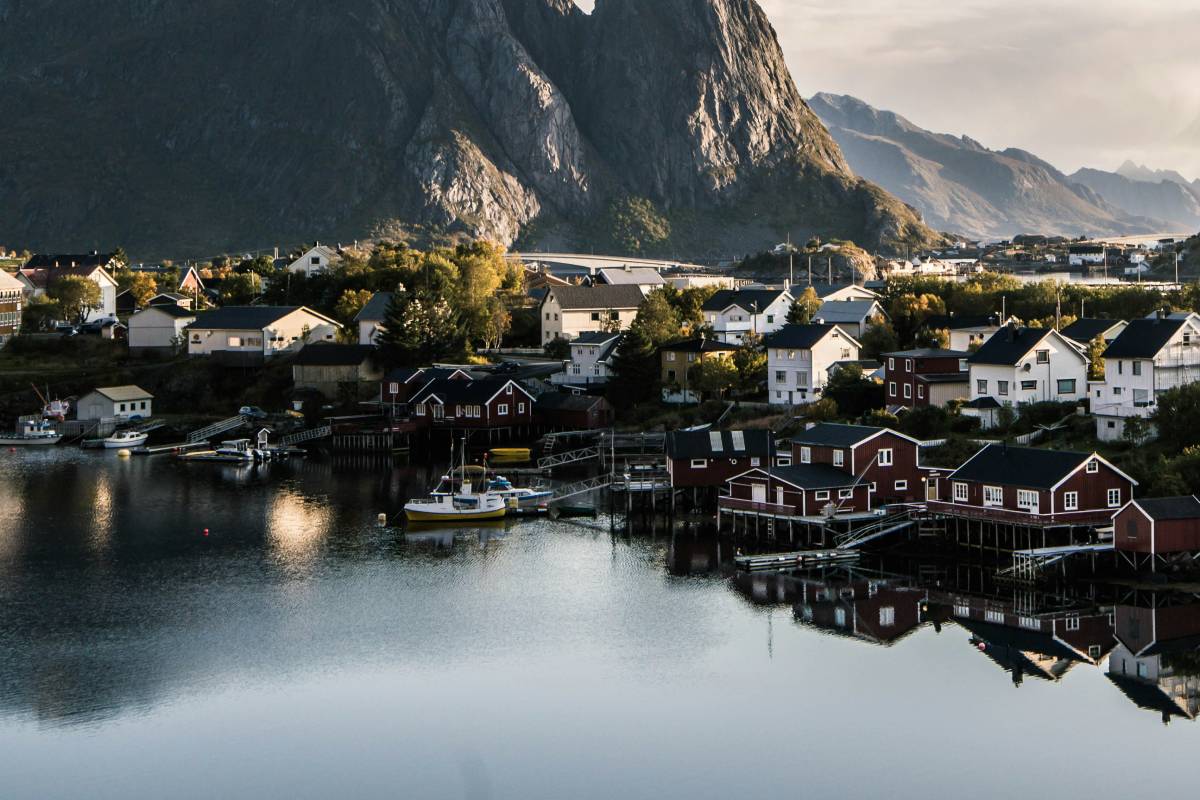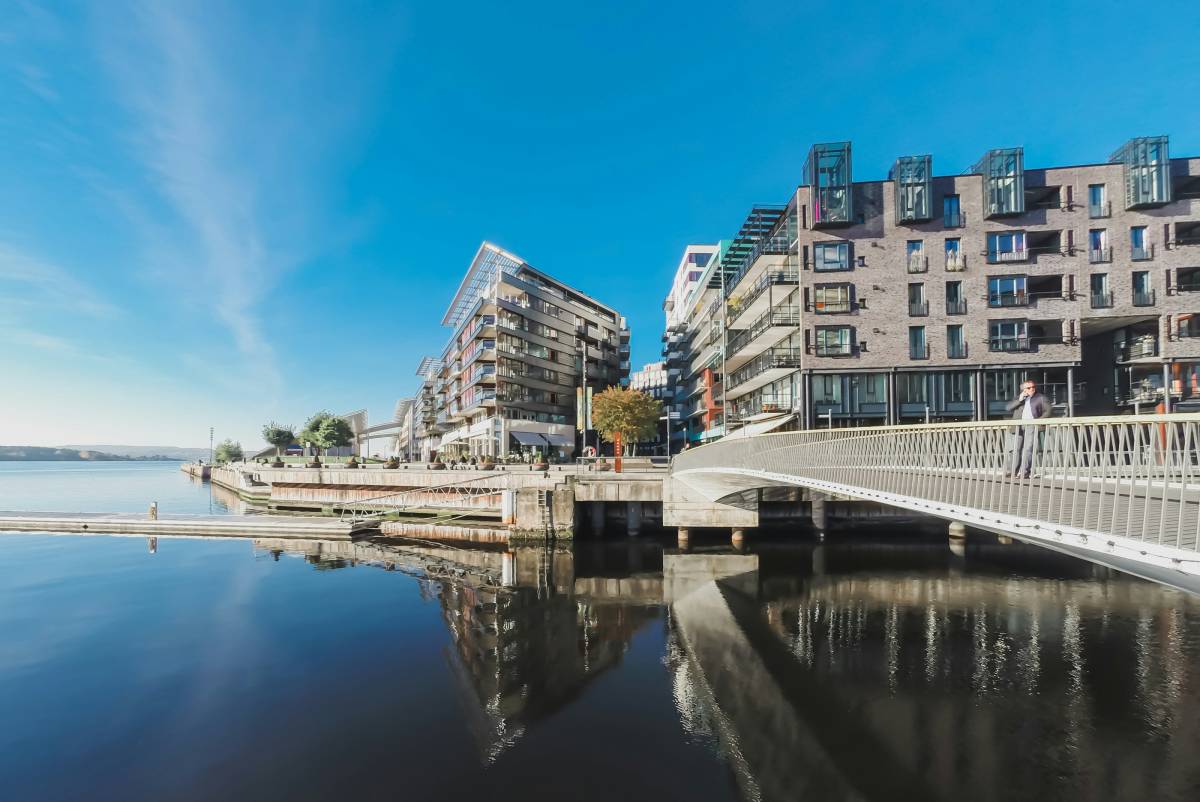Why do all homes in Norway seem to look the same?

Of course not every home in Norway is identical but there are several major trends that are easily identifiable in most cities that might give you the impression that they all look the same.
Before we explain the similarities there is plenty of variety among homes in Norway.
Different regions in Norway have their own styles, and people's personal tastes and modern trends also play a role.
Furthermore, urban areas are way more eclectic compared to rural and more isolated regions, and at the same time, the biggest cities need to deal with population pressure.
READ MORE: What you need to know about the Norwegian housing model
However, it is undeniable that a few significant trends dominate the landscape in most of Norway's towns and cities.
The traditional wooden house
The first trend is the traditional wooden house, which is often medium-sized and square.
These homes, painted in classic colours such as white, dark red, ochre yellow, or brown, are omnipresent across Norway.
While you will easily spot them in any smaller town, even the two largest cities – Oslo and Bergen – still boast many traditional wooden houses.
READ MORE: Oslo versus Bergen: Five big differences between Norway's two largest cities
If you take a walk to Bergen's Old Town, you'll find an array of traditional wooden houses in the area behind the UNESCO-protected Bryggen Wharf. Many wooden houses can also be found in the centrally located Verftet neighbourhood on the Nordnes peninsula.
Their uniform appearance stems from historical building practices and the practicality of using wood as a primary construction material in a forest-rich country.
These homes not only serve as a testament to Norway's architectural heritage but also adapt well to the country's climate, providing insulation against the cold.
Additionally, local building regulations often dictate specific architectural styles to preserve the cultural heritage of Norwegian towns and villages – especially in neighbourhoods with a rich past.

Wooden houses in Reine, Lofoten Islands, northern Norway. Photo by Jonas Geschke on Unsplash
Modern Norwegian housing
The second trend includes more modern housing solutions, such as terraced houses, new builds, and apartment blocks.
These structures are increasingly common in urban areas where space is at a premium. Many construction projects in the outskirts of Bergen feature this kind of development as the city expands to accommodate its growing population.
This trend reflects contemporary architectural styles and is often designed with energy efficiency and sustainability in mind.
The uniformity here is driven by modern urban planning in cities like Oslo, Bergen, Trondheim, and Stavanger.

The Aker Brygge wharf area in central Oslo. Photo by Meriç Dağlı on Unsplash
Traditional vs modern: What advocates of the two styles say
Supporters of traditional Norwegian homes argue that these old structures are very durable. They point out that the wood used in homes from 40 to over 80 years ago comes from slow-growing trees, making it dense and rot-resistant.
Compared to modern building materials, which they often view as inferior, they claim that wood in these older homes ensures longevity – as long as the house has been adequately maintained.
READ MORE: What you should know before buying a house in rural Norway
Furthermore, the longevity of old wooden houses in Norway is well-documented. Many homes built in the early 20th century still retain their original structure despite multiple renovations.
As long as the wood remains dry, it can last for decades – or even centuries.
On the other hand, with advancements in building technology, modern houses are designed to minimise heat loss, reduce energy consumption, and lower utility bills - particularly relevant in the cost-of-living crisis plaguing Norway and Europe in recent years.
These homes often feature high-level insulation, double or triple-glazed windows, and advanced heating systems, which make them more environmentally friendly and cost-effective in the long run.
Another key advantage of modern homes is their adherence to strict building codes and standards.
Today, Norwegian houses are built to high specifications, ensuring safety, comfort, and durability. Mandated ventilation systems improve indoor air quality and prevent issues like mould and dampness.
In addition to technical improvements, modern homes are also designed with contemporary lifestyles in mind. Open floor plans and larger windows create bright and adaptable living spaces.
Comments
See Also
Before we explain the similarities there is plenty of variety among homes in Norway.
Different regions in Norway have their own styles, and people's personal tastes and modern trends also play a role.
Furthermore, urban areas are way more eclectic compared to rural and more isolated regions, and at the same time, the biggest cities need to deal with population pressure.
READ MORE: What you need to know about the Norwegian housing model
However, it is undeniable that a few significant trends dominate the landscape in most of Norway's towns and cities.
The traditional wooden house
The first trend is the traditional wooden house, which is often medium-sized and square.
These homes, painted in classic colours such as white, dark red, ochre yellow, or brown, are omnipresent across Norway.
While you will easily spot them in any smaller town, even the two largest cities – Oslo and Bergen – still boast many traditional wooden houses.
READ MORE: Oslo versus Bergen: Five big differences between Norway's two largest cities
If you take a walk to Bergen's Old Town, you'll find an array of traditional wooden houses in the area behind the UNESCO-protected Bryggen Wharf. Many wooden houses can also be found in the centrally located Verftet neighbourhood on the Nordnes peninsula.
Their uniform appearance stems from historical building practices and the practicality of using wood as a primary construction material in a forest-rich country.
These homes not only serve as a testament to Norway's architectural heritage but also adapt well to the country's climate, providing insulation against the cold.
Additionally, local building regulations often dictate specific architectural styles to preserve the cultural heritage of Norwegian towns and villages – especially in neighbourhoods with a rich past.

Modern Norwegian housing
The second trend includes more modern housing solutions, such as terraced houses, new builds, and apartment blocks.
These structures are increasingly common in urban areas where space is at a premium. Many construction projects in the outskirts of Bergen feature this kind of development as the city expands to accommodate its growing population.
This trend reflects contemporary architectural styles and is often designed with energy efficiency and sustainability in mind.
The uniformity here is driven by modern urban planning in cities like Oslo, Bergen, Trondheim, and Stavanger.

Traditional vs modern: What advocates of the two styles say
Supporters of traditional Norwegian homes argue that these old structures are very durable. They point out that the wood used in homes from 40 to over 80 years ago comes from slow-growing trees, making it dense and rot-resistant.
Compared to modern building materials, which they often view as inferior, they claim that wood in these older homes ensures longevity – as long as the house has been adequately maintained.
READ MORE: What you should know before buying a house in rural Norway
Furthermore, the longevity of old wooden houses in Norway is well-documented. Many homes built in the early 20th century still retain their original structure despite multiple renovations.
As long as the wood remains dry, it can last for decades – or even centuries.
On the other hand, with advancements in building technology, modern houses are designed to minimise heat loss, reduce energy consumption, and lower utility bills - particularly relevant in the cost-of-living crisis plaguing Norway and Europe in recent years.
These homes often feature high-level insulation, double or triple-glazed windows, and advanced heating systems, which make them more environmentally friendly and cost-effective in the long run.
Another key advantage of modern homes is their adherence to strict building codes and standards.
Today, Norwegian houses are built to high specifications, ensuring safety, comfort, and durability. Mandated ventilation systems improve indoor air quality and prevent issues like mould and dampness.
In addition to technical improvements, modern homes are also designed with contemporary lifestyles in mind. Open floor plans and larger windows create bright and adaptable living spaces.
Join the conversation in our comments section below. Share your own views and experience and if you have a question or suggestion for our journalists then email us at [email protected].
Please keep comments civil, constructive and on topic – and make sure to read our terms of use before getting involved.
Please log in here to leave a comment.